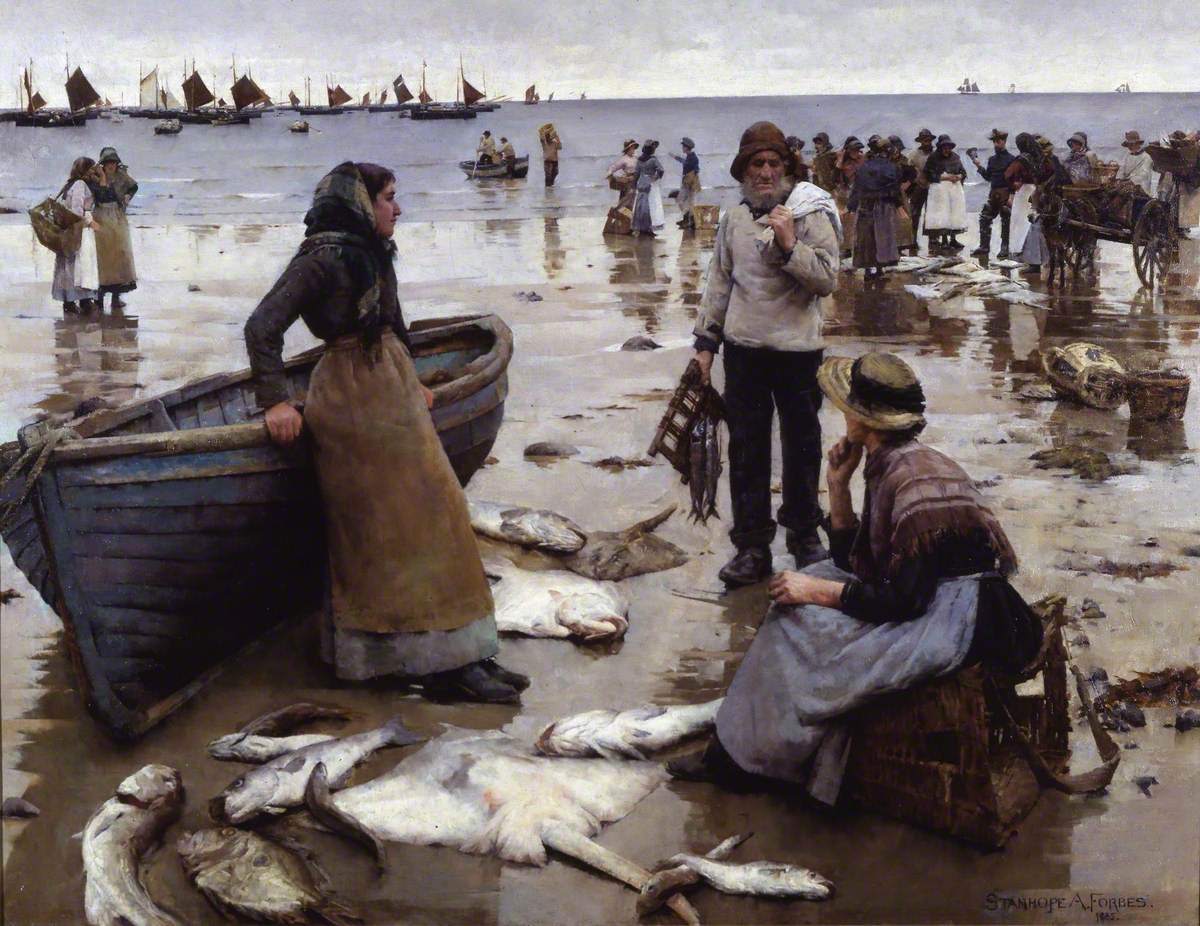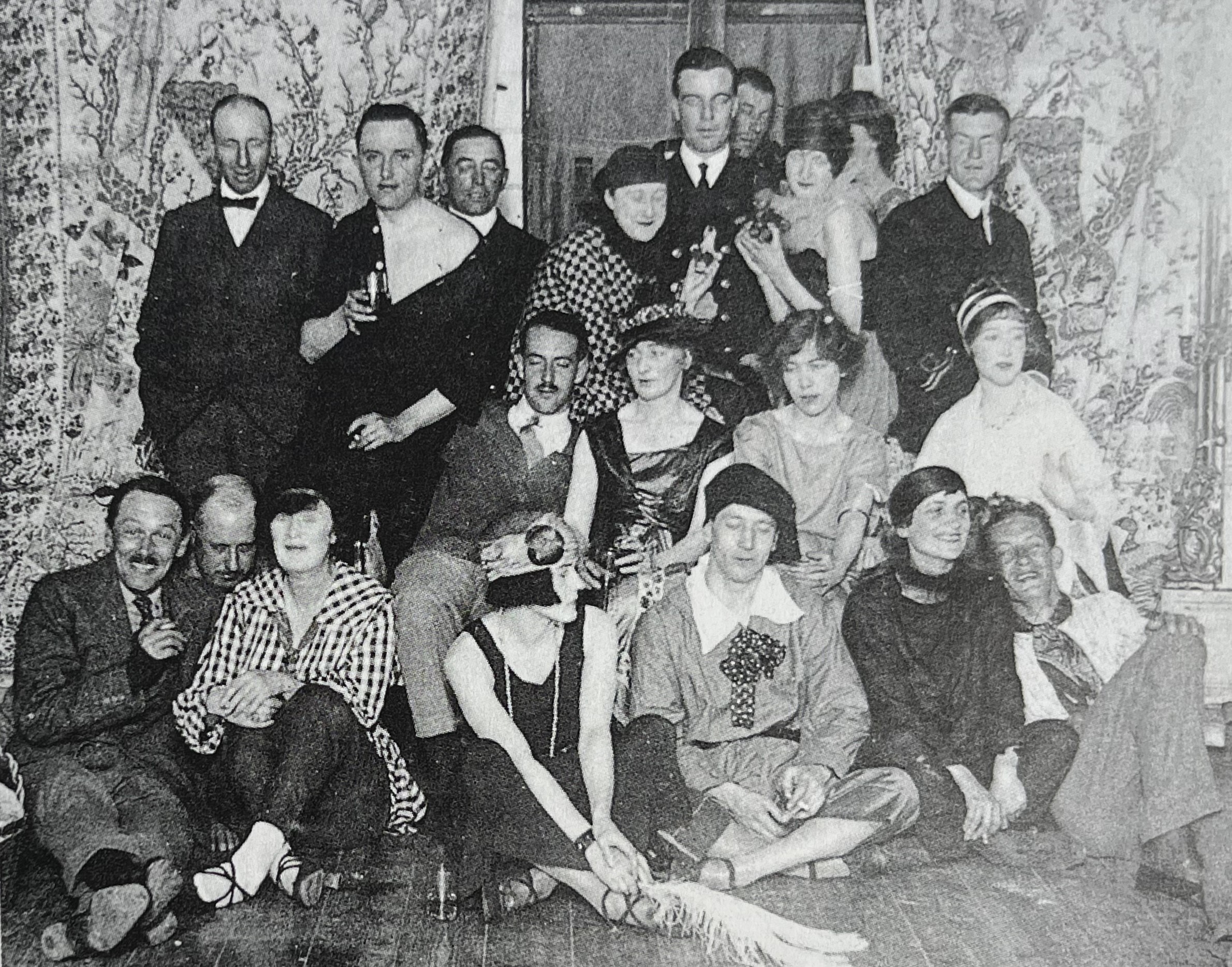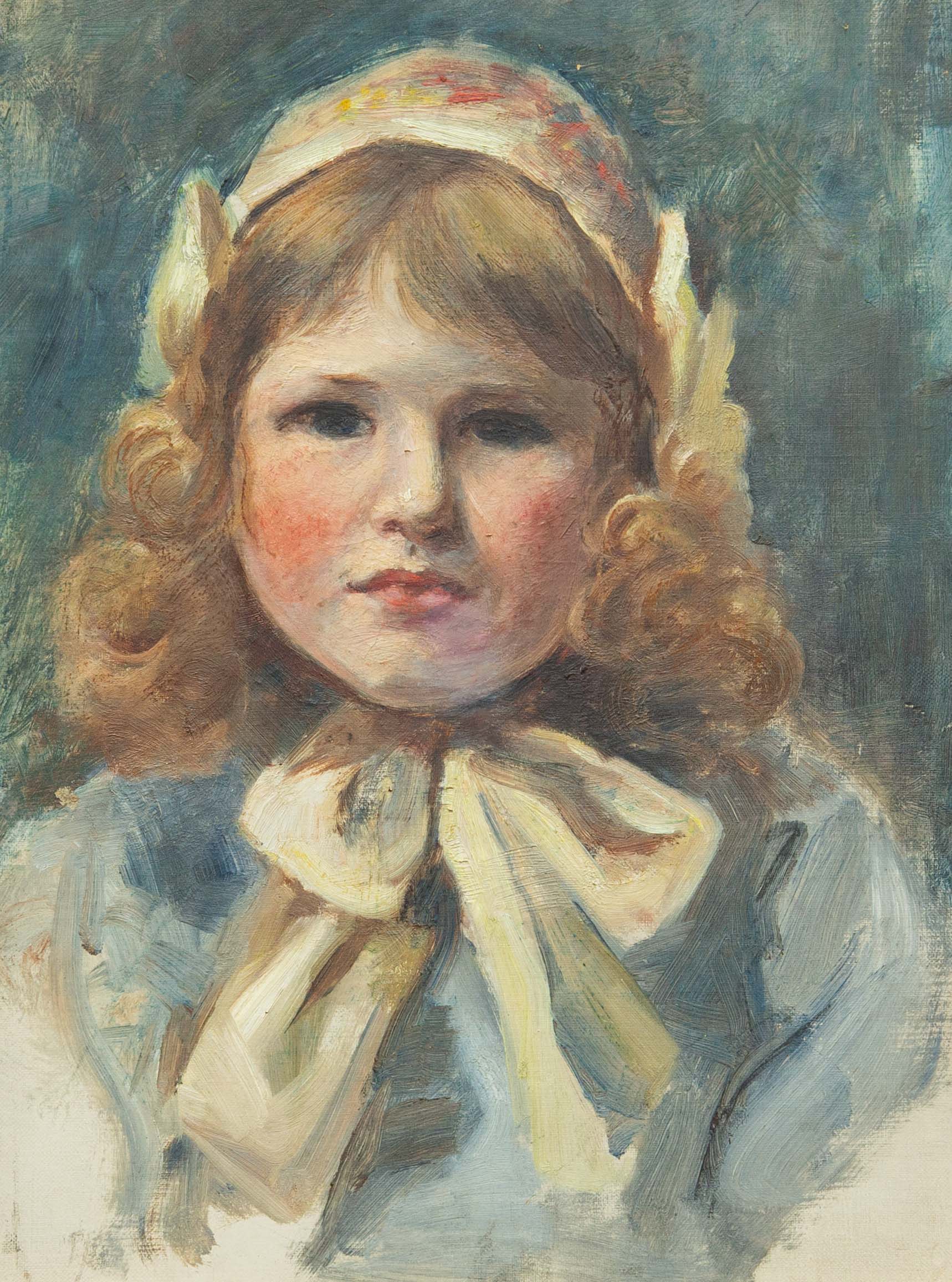
Lot 92. Girl in a bonnet, oil on canvas. c.1907-10
It was in 1907 that recently widowed Eunice Shaw made the judicious social and economic decision to move with her two children to the fishing village of Newlyn, where both children enrolled in the prestigious Forbes’s School of Painting. A former student of the Slade School of Art herself, Eunice was particularly eager to cultivate her young daughter’s clear artistic aptitude and was drawn to the far reaches of Cornwall not only by its magnificent coastline but also by the burgeoning artists’ colony - an inspiring community where creative study, a lively social scene, and a liberal spirit came together in harmony.
By the time Doris (Dod) and Gerard Shaw joined the Forbes School of Painting, the fame of Newlyn as an art colony was already long established. The first wave of artists (Stanhope and Elizabeth Forbes, Walter Langley, Frank Bramley, T C Gotch and H S Tuke, to name but a few) had started arriving in the early 1880s and quickly began to make an impression on the Royal Academy, with their dedication to en plein air painting and depictions of ‘real working life’. Stanhope Forbes’ Fish Sale on a Cornish Beach, exhibited ‘on the line’ in 1885, was met with widespread national acclaim and became a defining moment for the Newlyn School, firmly placing it on the artistic map.
Fish Sale on a Cornish Beach by Stanhope Forbes 1885
Dod embraced her new life and avant-garde teaching programme with great ease, quickly forming close bonds with fellow students 'Fryn’ Tennyson Jesse and her cousin Cecily, and, of course, Ernest Procter, whom she would later marry.
Dod (centre, seated on floor) looking fabulously stylish and aloof at a Newlyn fancy dress party
One of the most influential relationships she developed in those early days was with the gentle, wise, and nurturing Elizabeth Forbes. Forbes may have served, perhaps unknowingly, as a role model for Dod, allowing her to maintain her artistic practice throughout marriage and motherhood. This was notably rare at the time; in the late Victorian and Edwardian era, it was common for women artists to see their creative output diminish or cease entirely after marriage, as societal expectations prioritised domestic roles over professional ambition. Elizabeth's continued, steady dedication to her art was an unusually progressive path, and she must have been an impressive and inspiring example for the younger generation of women painters.
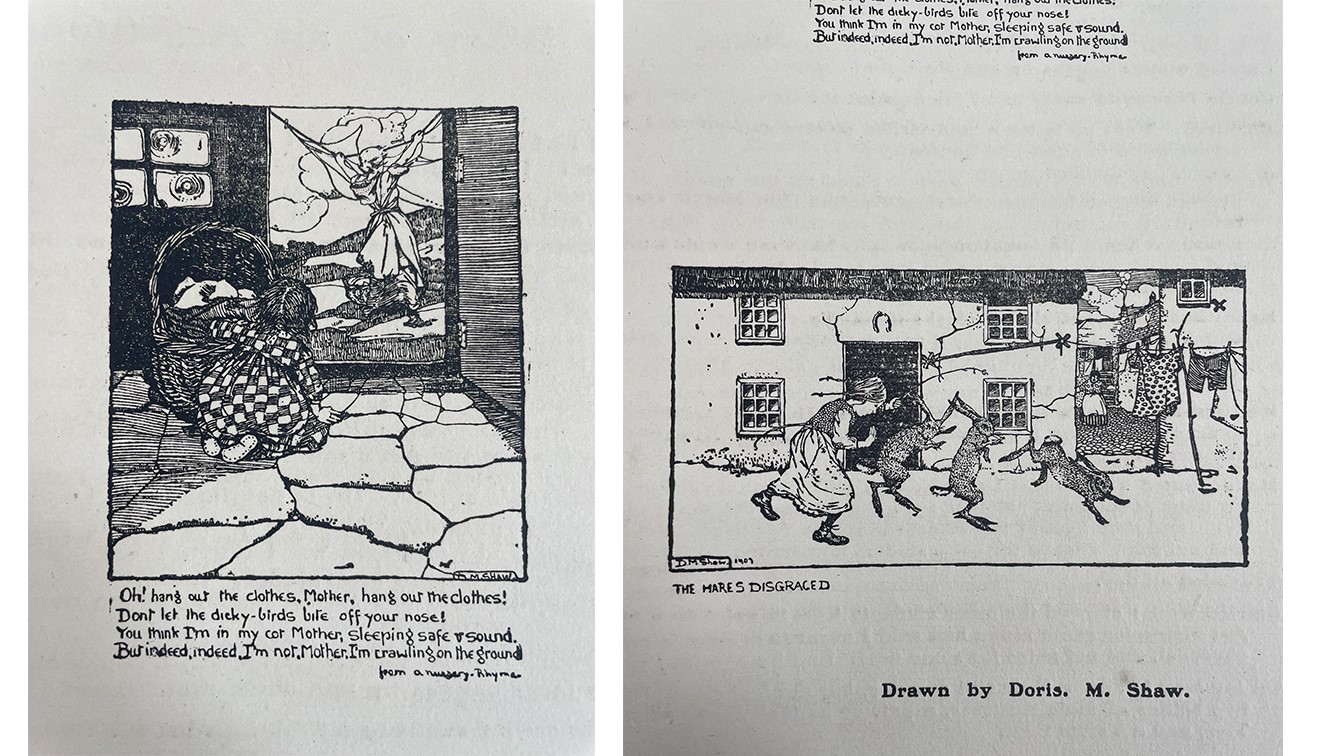
We can see excellent examples of some of Dod’s artistic output from this period in her 1908 woodblock illustrations for ‘The Paper Chase’ (above) a short lived art magazine created and published by Elizabeth Forbes. They clearly show the influence of well-known illustrators of the day. We are fortunate to have even earlier examples of her work in the two lots by Dod Procter in our July Cornish Art sale. Dated 1907 and strongly related to the wood block illustrations in the Paper Chase, is a captivating double-side miniature ink and watercolour painting of a child, reminiscent of children's illustrations, held within a gold pendant. The second lot is a portrait of a young girl in a bonnet, this was possibly painted also as early as 1907, the year she first joined Forbes’s painting school. It is a loose, fluid and confident work that displays the burgeoning artist’s talents: an ambiguously serene young woman is unsentimentally portrayed, in soft light; it has all the hallmarks of Procter’s future great works.
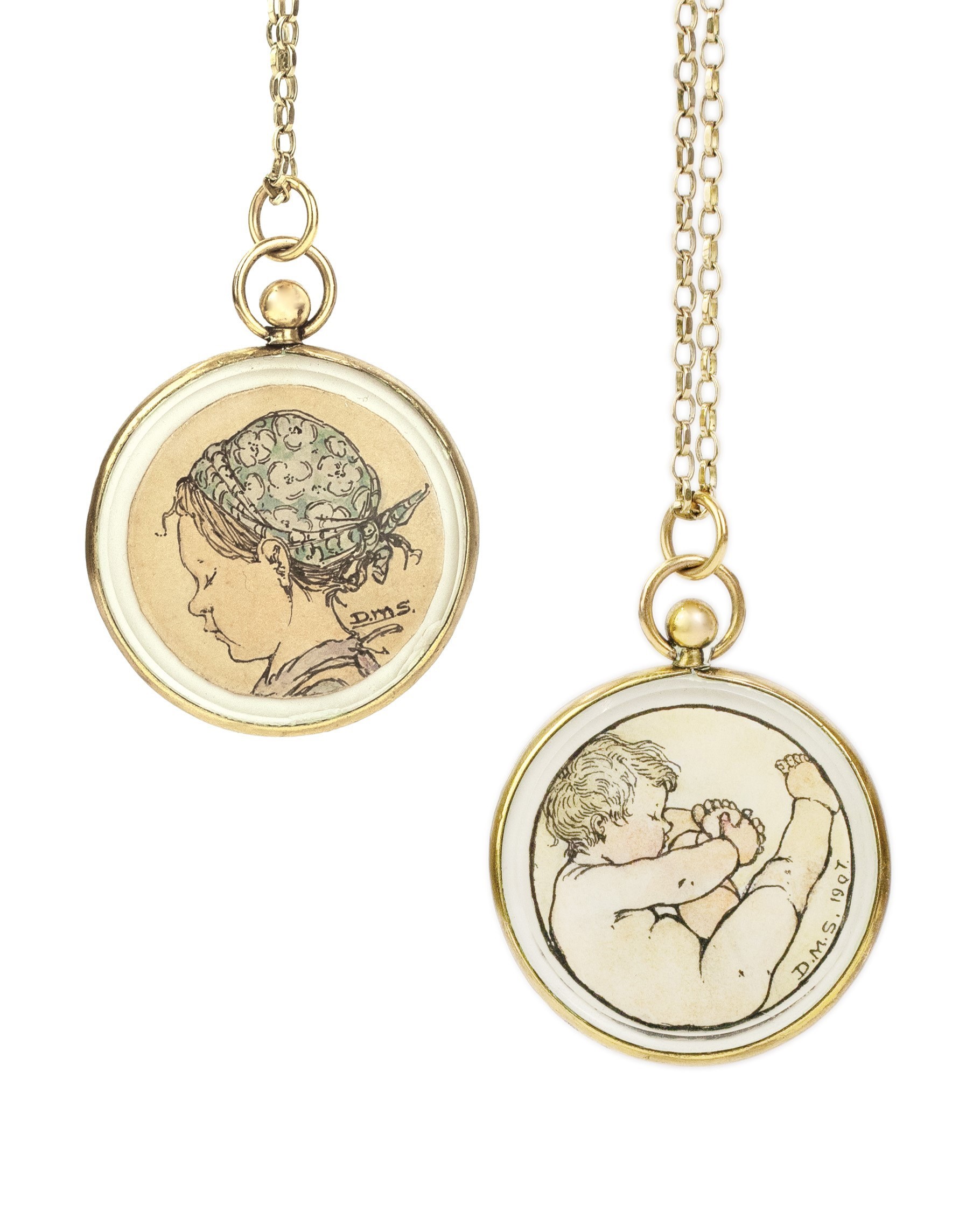
Baby and Child's Head, 1907, watercolour & ink
Dod Procter is now an enormously popular and collected artist, and has quite rightly been elevated to a level of respect and admiration that her work has not enjoyed for a long time. In these two early works we can see her painting style developing and they give a fascinating insight into her path as an artist.
*Although Doris Margaret Shaw’s birth certificate is dated 21st of April 1890, neither she nor others seemed to recall the date consistently. In a letter to the Royal Academy she gave 1891, while most press coverage and archival records cite 1892. Whether this discrepancy was an honest mistake or a subtle attempt to appear younger remains open to interpretation!
Click here to view the two lots by Dod Procter in our July Cornish Art Sale


